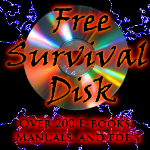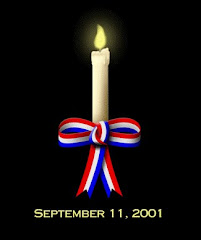For me, having grown up sewing, it seems unfathomable that many people don’t know how to do basic maintenance or sewing, but it’s true. I have work contacts who cannot even replace a missing button – one even has a dog who likes to chew them off her blouses-while others don’t know how to hem pants or repair a split seam. If for no other reason than to not pay $5-10 a pair of pants or for replacing a button, it is worth having a basic sewing kit and knowing how to use it. The super basic small emergency kits found online or at fabric and craft stores are great for slipping into a purse, glove compartment or desk drawer for those “urgent” repairs, but not much else, so what do you put in a basic sewing kit?
First is the container, whether it is a basket or miniature box with pullout shelves, a recycled pretty metallic tin or paper Mache box from the thrift store for larger kits or a snap lock kitchen container. I have a nice collection of tins and boxes to sort out larger amounts of things since I’m a crafter/hoarder and like the Victorianesque effect to keep them organized yet pretty. The thrift stores are my friends for that, as I can pick them up for less than a dollar apiece.
Scissors: 1 reliable pair of paper scissors and1 pair of fabric shears. Color coding your handles can help keep them straight, especially since you don’t want to use fabric shears for anything other than fabric as it will dull them and make cutting a much harder job! Personally, I use Kai shears, which are a specialized brand I pick up at the Sewing Expo for my fabric cutting, and cheaper pairs from the dollar stores, Wal-Mart or 40% off coupons at JoAnn or Hancock fabrics for paper scissors or loaners. Spring-loaded Fiskar shears or Gingher blades are a good alternative for the Kais I use, and are quite a bit cheaper as well (the spring-loaded are easy on arthritis or carpal tunnel sufferers). Unless you are looking to become a full-bore sewer of any type, you probably do not need bent-nose shears or pinking shears (more on those in another post).
Straight pins & pin cushion: I like using the larger boxes of longer quilting pins since I generally have several projects in progress simultaneously, or other people needing to use them too. I have a couple of the red tomato & strawberry emery pincushions, but keep 2 magnetic bowls (found much cheaper in the tool section at hardware stores or Sears) to hold the bulk of my pins. The handy thing with the bowls is that fewer are spilled or knocked over; they are easier to pick up out of the floor if they DO spill, and it stays firmly in place on the ironing board.
Tomato pincushions have been the ubiquitous shape for seemingly over a hundred year; the best are filled with sawdust and wool roving. The lanolin saturated roving prevents pins from rusting while the sawdust gives more stability and weight. The strawberry is filled with fine sand or emery which abrades dirt and rust from your pins and needles helping them last longer. There are also pincushions which can sit on your wrist, but those just drive me batty (or battier if you prefer).
Tape measure: Whether a basic tape or a retractable, at least 60” long with centimeters and inches clearly marked. Carrying one of these on you when shopping isn’t a bad idea either, especially at thrift stores where waist/inseam tags might be missing. When making simple skirts or pants, the tape measure can also help you keep the lengths and angles even when marking out your pattern.
Seam ripper: A seamster’s best friend. Really. I have several all over the place in my sewing room-one with each of my machines and a couple in my drawers or kits. Most are the inexpensive ones from the dollar store/Wal-Mart; others are the more ergonomic handled types purchased with 40% off or 50% notion sales/coupons. Surgical blades are also used for this purpose, but may not be as easy to hold onto and honestly I seem to snap them more often. In a pinch, they’re also great for opening up buttonholes!
Hand sewing needles: Having an assortment of sizes and types is useful, especially since needles aren’t terribly expensive. Generally the finer the fabric you are working with, the finer sized needle you will use.
The most commonly used hand sewing needles are called sharps. Sharps have a medium length (in comparison with all available needles), have a round eye for the thread and are suitable for almost any fabric. Betweens are also in this category, and are used a lot for quilting. Thinner needles with fine sharp points will work better for most projects, but you can run a risk of cutting through a thread and making a snag. I’d say 90-95% of the needles I keep on hand are sharps or betweens. If I’m mending something out of a knit or jersey, I use a ball point needle rather than a sharp so that it pushes between the threads rather than through them.
Thicker tapestry or crewel needles with larger eyes can help you run narrow elastic or ribbons through laces or casings if you don’t have a bodkin or safety pin handy, and upholstery needles are sturdy enough to help you push/pull through heavier fabrics without snapping or even some leathers. You can keep them in the flimsy plastic cases or paper slips they are sold in, or use some felt, wool, or tight-woven fabric scraps to keep them together and easily accessible, or even a wooden/metallic needle case.
Thread: Definitely a must and not one to use the bargain bin threads for, honest! I’ll use serger threads for some sewing projects, but it is really meant for use with multiple needle machines and is thinner than standard thread meaning it can snap under tension sooner. Coats and Clark or Gutterman threads are good brands for basic hand or machine sewing. If you are sewing on buttons, snaps or other fasteners, I recommend using a buttonhole, quilting or upholstery thread instead as they are a bit stronger. Do NOT use rayon or machine embroidery thread for standard hand or machine sewing, it will not hold up to regular wear and tear for clothing!
Safety pins: At least a small card or packet of 10-20 is a good thing to keep in a basic kit. They can help keep things in place even more reliably than straight pins, double as a bodkin to pull ribbons or elastics through a casing, or hold an end of cords in place while twisting or braiding. And of course, the emergency hem repairs! 1/2” or larger are the types I use most, anything smaller is more finicky than I like to fiddle with.
Optional Items I recommend adding to a basic kit:
A small button jar: Using a small baby food or spice jar, I would add loose buttons of colors and sizes that go with most of the clothing in your wardrobe. From the extras included on tags of new blouses to rummaging bins at thrift stores or the button sales at the fabric store, it is a handy thing to have in case one falls off and you can’t find it, it snaps in two, or yes, having the dog or cat eat it.
An assortment of hooks and eyes and sew-on snaps: From the larger coat or skirt styles (also useful for making pretty ribbon/lace choker necklaces) to the smaller separates, these can be nice to have.
A length of sew-on Velcro: Dollar stores locally have had it in 3 yard lengths-which is much cheaper than my fabric stores.
Bo-Nash starter kit: This is a powdered glue which works marvelously for all types of projects. You simply sprinkle it between the two items to be bonded, use a presser sheet to protect your iron and in a few moments a strong flexible and clear bond occurs. You can fuse two pieces of spandex/lycra together and still have it stretch, denim or leather patches onto high-wear areas like knees and elbows or fragile fibers like Angelina to chiffon for stunning costume pieces. It can be purchased online at Bonash.com, EmbellishmentVillage.com or Joggles.com. The starter kit has a smaller amount of Bo-Nash, but includes a standard size presser sheet, which can also be used when working with a hot glue gun to protect your table.
Beeswax: A small piece for running thread through prior to threading your needle for hand sewing projects. It helps keep the thread from snagging as much and lets it run through the fabric easier. Do not do this for projects with silk!
Next post? Handy guides and sewing room tools, beginning sewing and how to find a basic inexpensive machine.
Pocket Super Shelter Now On Kickstarter
6 years ago


























